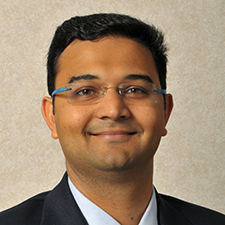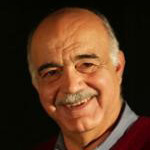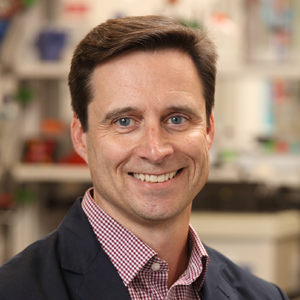The Foundation has recently funded four research studies. Three of the projects – at Ohio State University, Weill Cornell Medical Center, and Stanford University – aim to improve the way focused ultrasound is used to treat brain disorders. The fourth – at the University of Virginia – will investigate whether focused ultrasound can improve the effectiveness of chemotherapy in breast cancer patients. The Foundation has recently funded four research studies. Three of the projects – at Ohio State University, Weill Cornell Medical Center, and Stanford University – aim to improve the way focused ultrasound is used to treat brain disorders. The fourth – at the University of Virginia – will investigate whether focused ultrasound can improve the effectiveness of chemotherapy in breast cancer patients.
Did you know?Over the past 11 years, the Foundation has awarded $4.4 million to fund 44 research studies, and these funded investigators have gone on to receive another $34.6 million in follow-on funding for their focused ultrasound work. This is an 8-fold increase in our investment. See the 2017 Annual Report > |
 Vibhor Krishna, MD – “Functional Neuroimaging Feedback for Focused Ultrasound Thalamotomy for Tremor Surgery”
Vibhor Krishna, MD – “Functional Neuroimaging Feedback for Focused Ultrasound Thalamotomy for Tremor Surgery”
Focused ultrasound thalamotomy is an efficacious treatment for refractory essential tremor. The success of this surgery relies on creating an optimal lesion for maximal efficacy without inducing side effects. Currently, clinical testing is the only method used to determine whether sufficient lesioning is being achieved during treatment. In the absence of a physiological feedback, this determination can be subjective: The number of therapeutic sonications performed for achieving long-term efficacy is not standardized and may be surgeon-dependent, adversely affecting the consistency of tremor outcomes and the side-effect profile of the treatment. We aim to develop a functional magnetic resonance imaging (fMRI) based feedback for focused ultrasound thalamotomy by studying the dysfunction in the tremor network. We hypothesize that (1) specific thresholds of altered functional connectivity (or ‘connectivity correlates of tremor’ (CCT)) between the hubs of tremor network (e.g., cerebellum and motor cortex) can distinguish essential tremor patients from controls and (2) this abnormal pattern is reversed after focused ultrasound treatment.
 Michael Gordon Kaplitt, MD, PhD – “MR-gFUS Gene Delivery for Neuroprotection in Parkinson’s Disease”
Michael Gordon Kaplitt, MD, PhD – “MR-gFUS Gene Delivery for Neuroprotection in Parkinson’s Disease”
Gene therapy holds great promise for treating many brain diseases. MR-guided focused ultrasound permits noninvasive delivery of gene therapy agents to specific brain regions, yet specific types of neurons within a given area serve different functions. We propose a new technology using focused ultrasound to target specific neurons that make up defined brain circuits. We will test the ability of this new approach to deliver a powerful growth factor gene to protect the at-risk dopamine neurons in a Parkinson’s disease model. A successful study could translate into more effective and safe therapies for various neurological and psychiatric disorders.
 Pierre Khuri-Yakub, PhD – “Efficient Transcranial Ultrasound Delivery Using Lamb Waves”
Pierre Khuri-Yakub, PhD – “Efficient Transcranial Ultrasound Delivery Using Lamb Waves”
Transcranial focused ultrasound is approved for noninvasive treatment of essential tremor and is being researched as a noninvasive means of ablating brain tumors, neuromodulation, and of increasing delivery of cancer therapeutics through the blood-brain barrier. Present technology relies on the use of an array of transducers placed in a helmet and aimed at the skull at normal incidence, which suffers from inefficient transmission, excess heating of the skull, and limited treatment envelope to the center of the brain. We propose the use of an array of ultrasound wedge transducers to couple energy into the brain via double mode conversion into Lamb waves, thus overcoming problems with the existing technology.
 Rich Price, PhD – “Therapeutic Efficacy and Safety of Ceramide Nanoliposomes in Combination with Focused Ultrasound for Treating Breast Cancer”
Rich Price, PhD – “Therapeutic Efficacy and Safety of Ceramide Nanoliposomes in Combination with Focused Ultrasound for Treating Breast Cancer”
Triple negative breast cancer poses a persistent clinical challenge given that it is refractory to most available endocrine or targeted therapies. Broadly speaking, our group is working to develop an improved therapy regimen for this patient population. We hypothesize that combining two separate treatment modalities (i.e., chemotherapeutic ceramide nanoliposomses (CNL) and image-guided focused ultrasound (FUS) ablation/heating) will offer therapeutic synergy in the treatment of breast cancer. Our expectation of synergy between CNL and FUS is based on evidence that (1) they are both capable of reducing, perhaps through distinct mechanisms, immunosuppression in the tumor microenvironment and (2) the delivery of systemically administered liposomes is expected to be markedly enhanced in FUS-targeted tumors. In the proposed experiments, FUS will be applied to 4 T1 breast tumors in mice during CNL administration. We will examine tumor growth, animal survival, CNL delivery, and immune cell representation in FUS-treated tumors, lymph nodes, and spleen. If this combination is shown to be therapeutically efficacious, we are well-positioned for clinical translation.
